|
On Halloween, I headed
out to Iona around 9am. I was intending to look for the Snowy
Owl, the Snow Buntings, and the White-throated Sparrow that had
been reported there recently.
I started by heading
in to the inner ponds. In the southeast corner of the southwest
pond there were several different types of gulls. Here we have
a shot with three different species: Ring-Billed Gull, Thayer's
Gull, and Mew Gull, from back to front. (Thanks to Mike for helping
out with this ID).
|
|
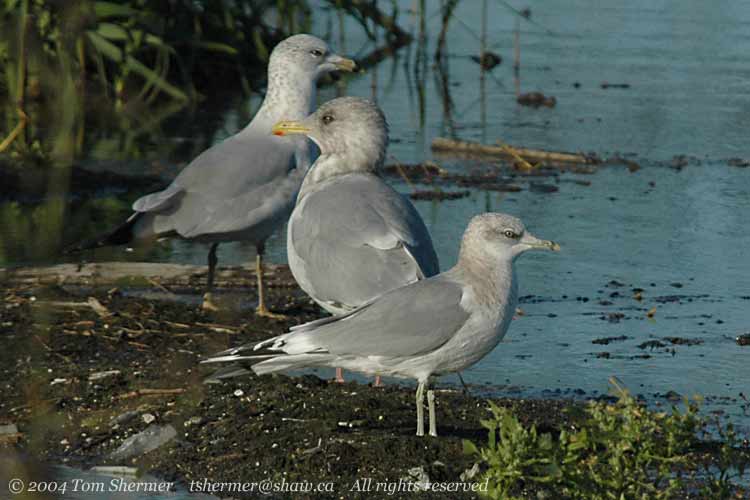 |
|
Further west, over
in the southwest corner, there were a few Gadwalls and Northern
Pintails. I was absentmindedly setting up to take photos of them
when some motion in the frame caught my eye. A Mew Gull was flying
through, and I snapped a few photos as it did.
|
|
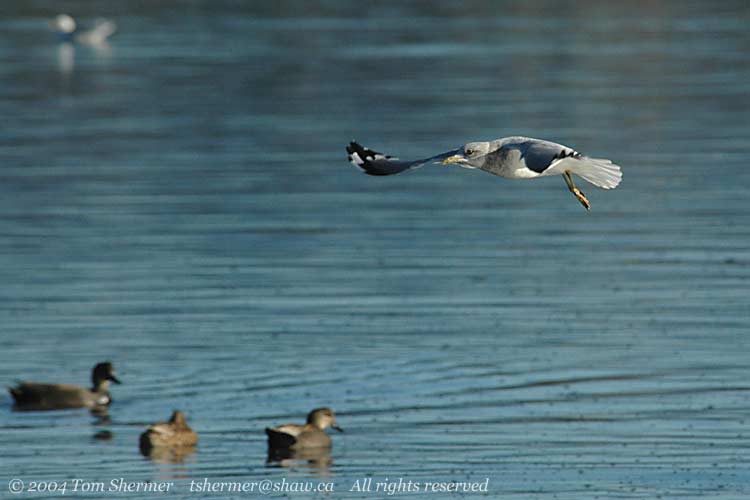 |
| I walked
north along the west side of the ponds, looking for the White-throated
Sparrow. Some motion in the bushes caught my eye, and I got three
photos of a Ruby-crowned Kinglet before it flew off. Here's the
only shot that showed its head. |
|
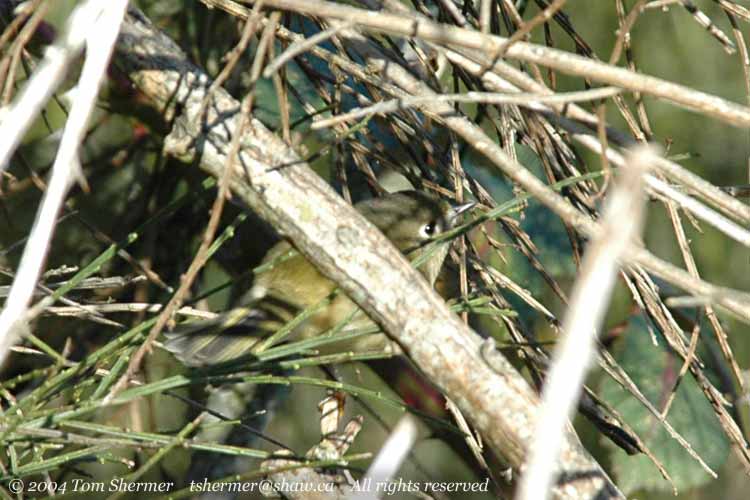 |
|
I scanned the bushes
where I thought it had flown, as I was up for a game of catch-a-photo-of-the-kinglet.
Soon I saw a bird that
I thought was the same one. It wasn't. This one was flitting around
like the previous one, but it had a bright yellow stripe on its
crown, with black and then white stripes as one goes away from
its crown. It was a Golden-crowned Kinglet, the only other type
of kinglet we get in North America, and a lifer for me. Kinglets
are in the genus Regulus, which has only six species, three
of which are called kinglets in English (the other one is the
Canary Islands Kinglet). So In the space of a minute I saw two-thirds
of the world's kinglet species.
Okay, maybe that's
not a big achievement.
What was perhaps more
impressive was my score in the kinglet game that followed: I won
21 to 11, athough I admit that I had the advantage of bright sunlight
and sparse vegetation.
Here are a few shots
of this cute little guy.
|
|
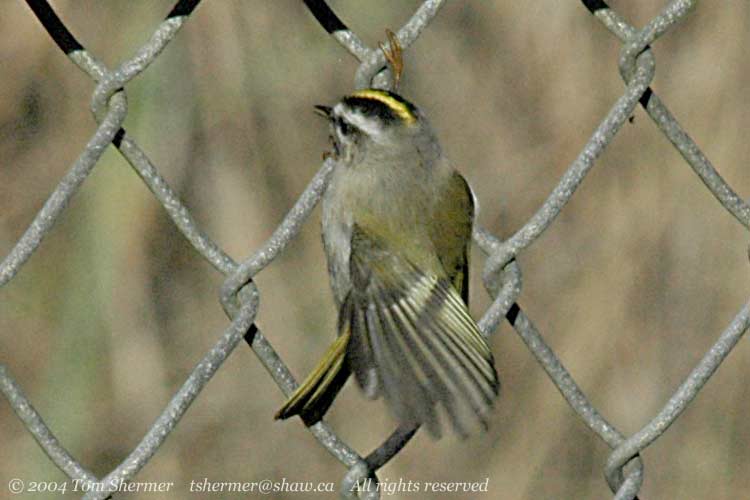 |
| |
|
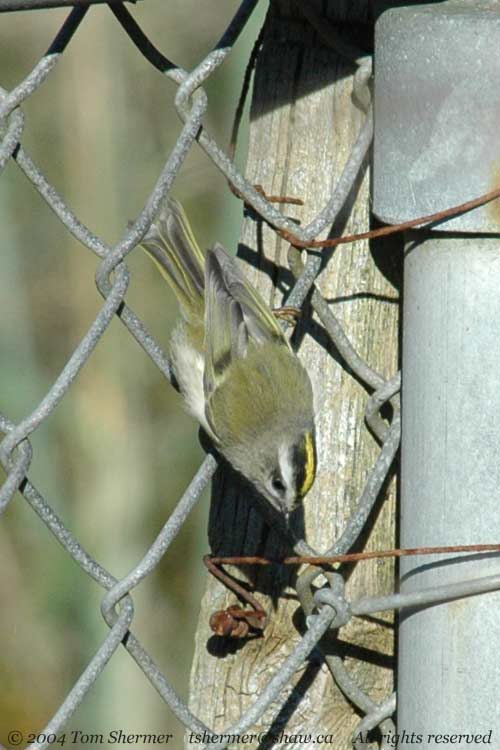 |
| |
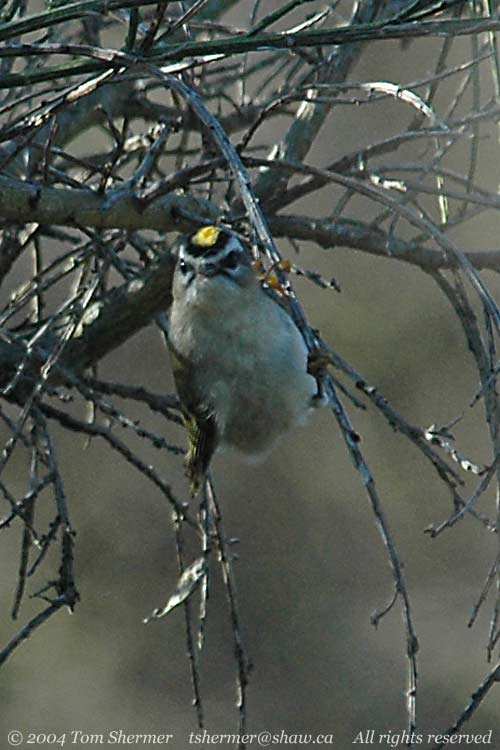 |
| After a
few minutes, we ended our game, and I headed on north, up to the
northwest corner of the ponds. There I found about seven or eight
House Finches feeding on a berry bramble. |
|
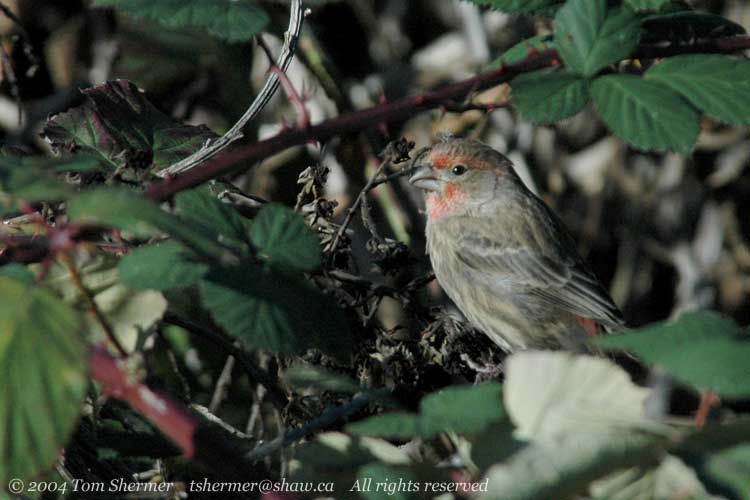 |
| At this
point, I heard a noise behind me and turned to find Grant and Marcia,
a pair of birders I know, coming up the path towards me. We were
chatting and looking at the bramble when a sparrow appeared. At
first glance, I thought it was a Savannah, but Marcia identified
it as a Lincoln's. It was a good call--she's been studyin' her sparrows.
Here's a couple of shots of our bird. |
|
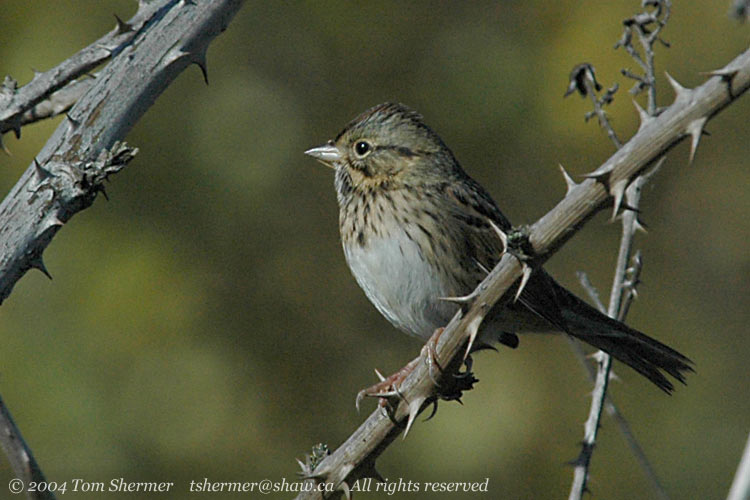 |
| |
|
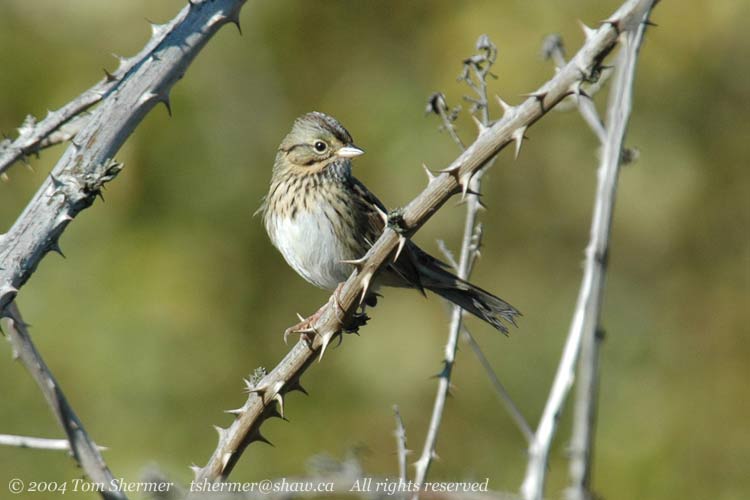 |
| A few Song
Sparrows also came by while we were there. |
|
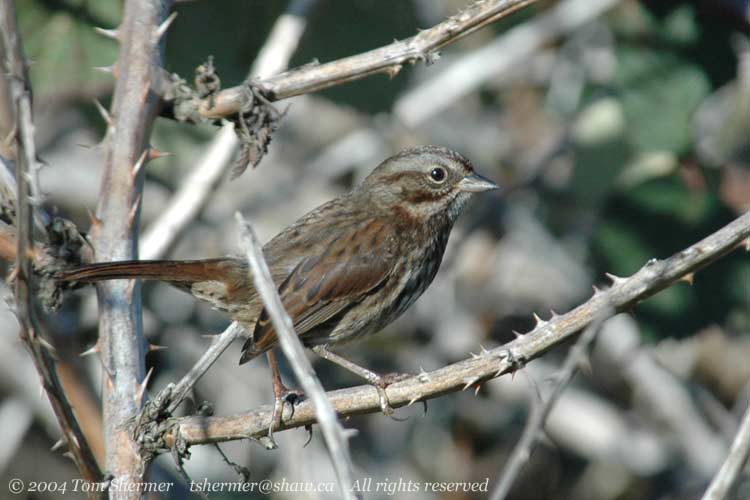 |
|
Grant and Marcia went
on their way, and I continued to search for the White-throated
Sparrow, which I didn't find. I went out the west gate and found
a little button mushroom as I was poking around on the trails.
|
|
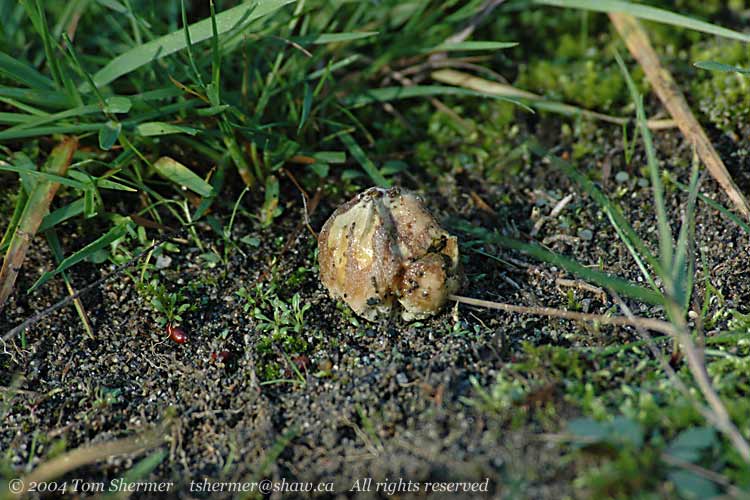 |
|
I think that it's the
button form of a mushroom in the genus Amanita, but I'm
not sure which one. Amanita includes the hallucinogenic and poisonous
Fly Agaric and Panther mushrooms.
After unsuccessfully
looking around for more mushrooms, I headed south and got some
close views of a male Hooded Merganser on the south outer pond.
|
|
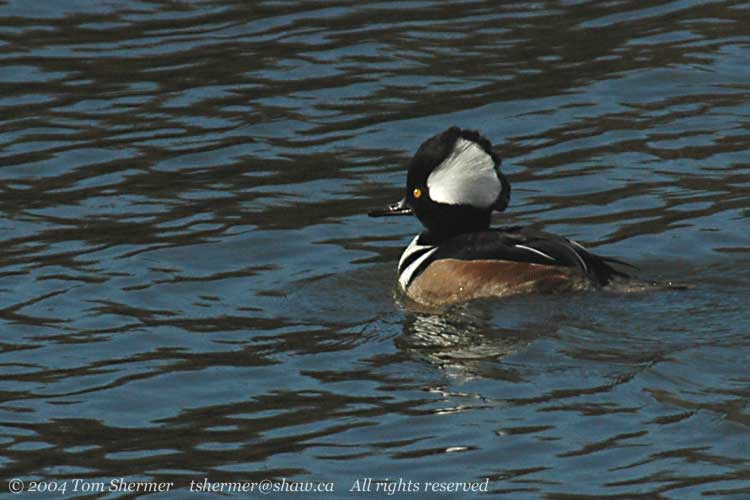 |
|
Once I was past the
outer pond, I walked back along the pipe towards the south gate
to the inner ponds. From the pipe I had a view of one of the inner
ponds, where I caught the following shot of some of the ducks
and a gull.
I think the ducks are
a Gadwall and a Northern Pintail. The Gadwall (behind) is obvious,
but the Pintail seems a bit odd. First, it's noticeably smaller
than the Gadwall. It's got body and wing plumage like a juvenile
or female Pintail, but totally dark brown head and neck. It's
missing the white breast and neck-stripe of the adult Pintail.
The long neck and bill shape and color (blue) seem right for a
Pintail, though. I would guess that I've got a juvenile male Pintail,
not fully grown, starting to molt into adult plumage. Maybe the
neck is covered with mud, giving it the brown color; it seems
too shiny to be just feathers.
|
|
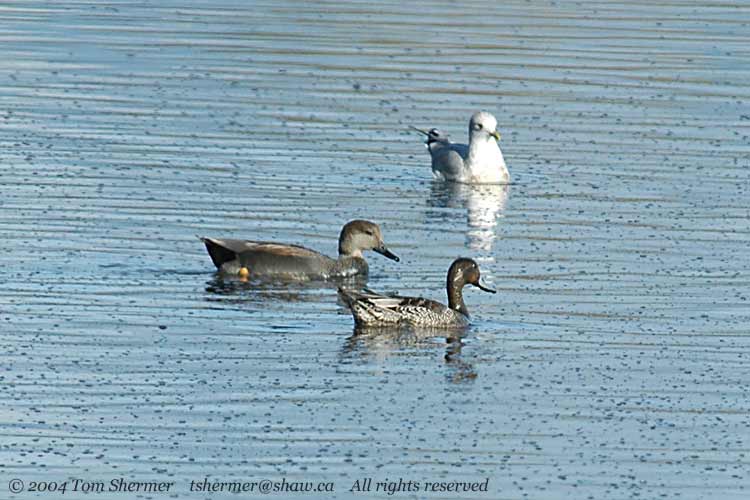 |
|
After puzzling over
that duck for a little while, I continued along my way, stopping
only to take some photos of a European Starling who let me approach
to about two meters.
|
|
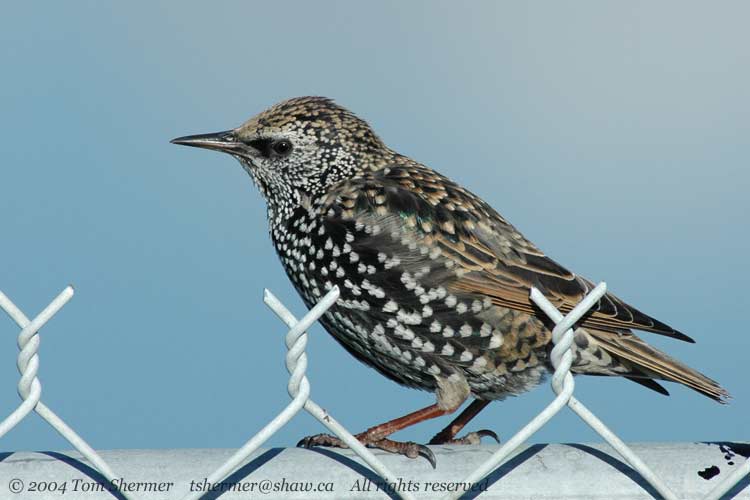 |
|
I slid down off the
end of the pipe and noticed more fungi. These little brown balls
of stuff are called Western Lawn Puffbowls.A neat name for a neat
little fungus. They're
each about as wide as my thumb.
|
|
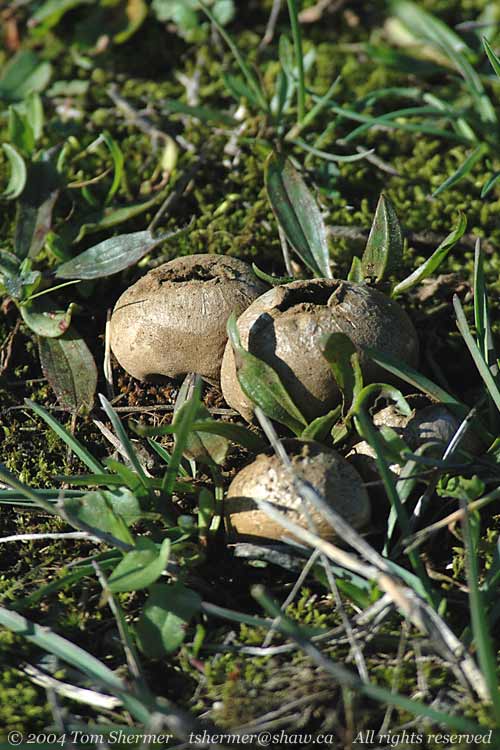 |
|
Also nearby was a small
patch of little orange flowers, which I can't even begin to identify.
Maybe some reader will be able to help me out.
|
|
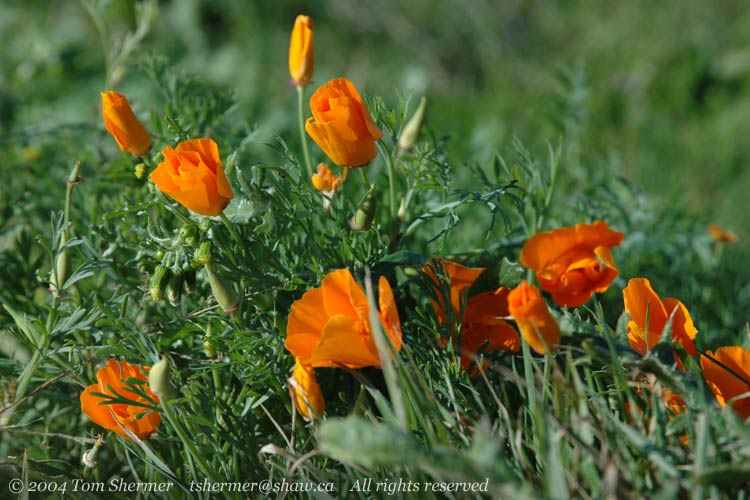 |
| I was now
near my car, so I jumped in and drove up to the parking lot. From
there I checked out the south outer pond. There were three white-
or light-bodied diving ducks there that I hadn't seen when I was
last there a few days ago. They were keeping their distance, so
I went around to the east side of the pond (where I had seen the
Hooded Merganser) to get their photo. They were Common Mergansers.
I didn't get any really good photos of them, but here's one of the
better shots, showing two of the three, with a Gadwall in the back. |
|
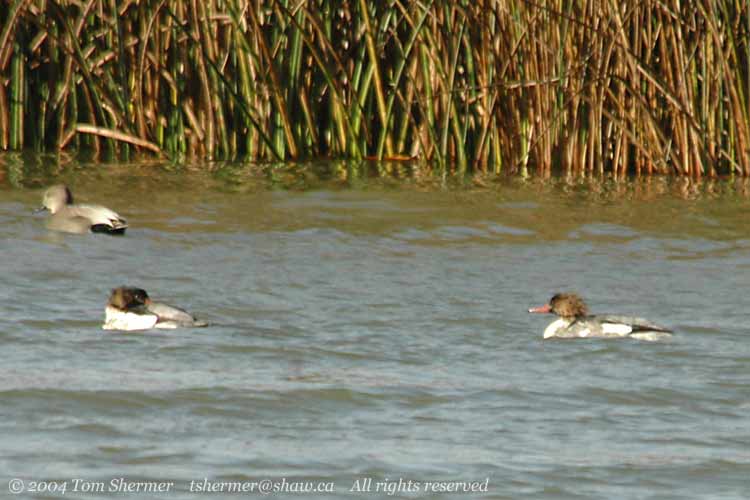 |
| I went back
to the west side of the pond, and sat down on the berm to take photos
of a group of about twenty Canvasbacks. They were all havin' a snooze. |
|
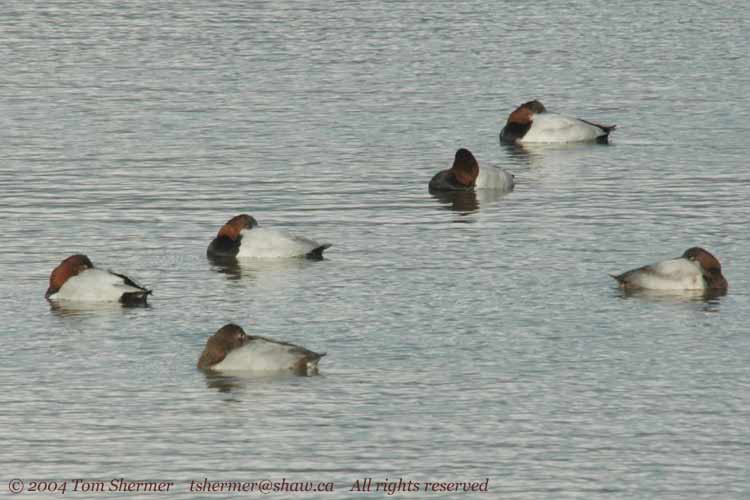 |
|
From there, I headed
out the South Jetty to look for the buntings. As I headed out,
a Bald Eagle was sitting on a log just north of the jetty.
|
|
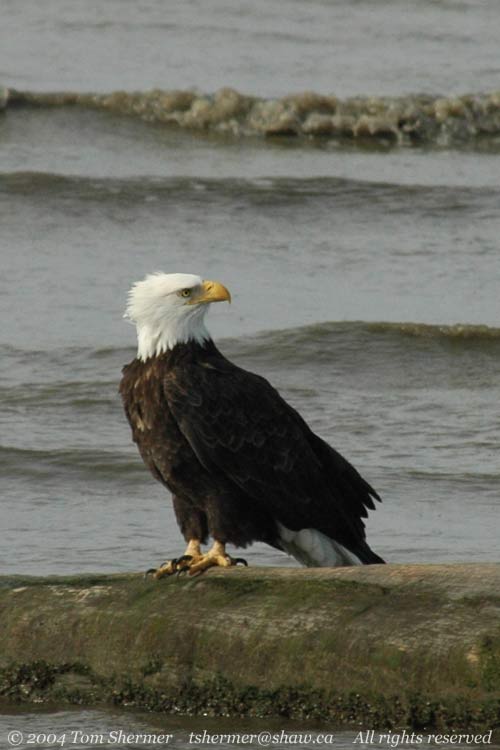 |
|
Right as I was sitting
to slide down and get even closer, he took off and flew north.
At least I didn't have to climb back up on the pipe.
I walked out to the
electrical shack right after the 1-klick mark. It was quite a
blustery walk and I was getting cold and hungry, and I had only
seen one or two birds on the jetty so far. Also, the light had
gotten a bit dimmer with the sun behind some hazy clouds that
stretched as far as I could see to the west. So I decided to turn
back without finding the buntings.
As I walked back, I
was passed by a guy on a bike with a scope and tripod slung across
his back. I later found out that that was a birder named Colin,
coming back from following the buntings down to the end of the
jetty. I would've had a long walk if I had wanted to see them.
Anyhow, the last photo
birds of my day were American Wigeons, who were just south of
the jetty where it meets the road.
|
|
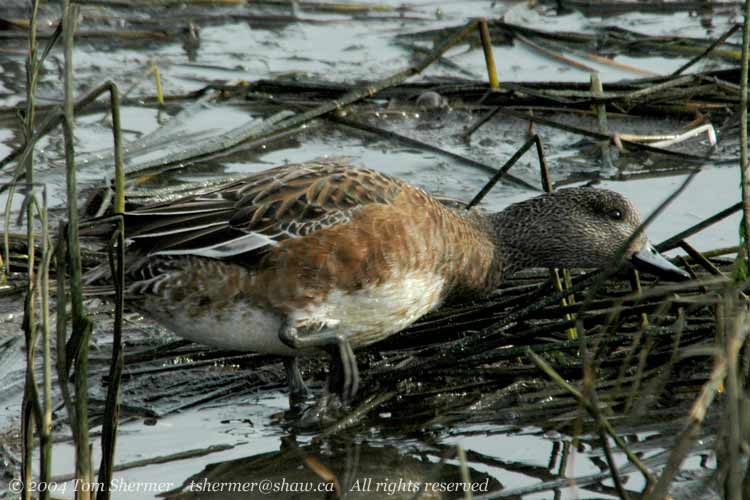 |
|
They were making those
cute little rubber-ducky wigeon noises.
Getting better with
those kinglets,
Tom
|
|